Superfund Sites in Reuse in Utah
If you are having trouble viewing the map in your browser, click the 'View larger map' link below
Bountiful/Woods Cross 5th S. PCE Plume
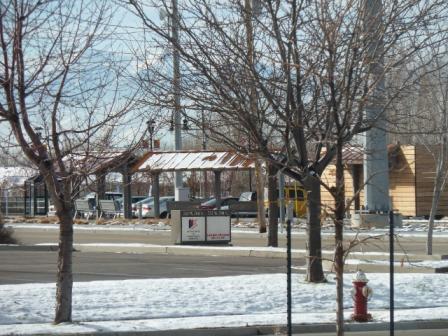 Bountiful/Woods Cross 5th S. PCE PlumeThe 450-acre Bountiful/Woods Cross 5th South PCE Plume Superfund site is located in Bountiful, Utah. The site includes two properties, the 50-acre Hatcho property and the 400-acre Bountiful Family Cleaners (BFC) property. From 1936 to 1996 several businesses operated on site including a petroleum facility, a family cleaners and a trucking business. Over time, spills and leaks from operations and holding tanks contaminated soil and groundwater. The main contaminant at the BFC property was tetrachloroethene (PCE), a solvent used by dry cleaners in the cleaning process. EPA added the site to the Superfund program’s National Priorities List (NPL) in 2001. Components of the cleanup included barriers, a water treatment system and long-term monitoring. In 2010, the federal government awarded the site American Reinvestment and Recovery Act (ARRA) funding for construction of the water treatment system. EPA and the responsible companies completed construction of the system in 2011. Currently, the site is in reuse. The Utah Transit Authority paved a portion of the Hatchco property to serve as a vehicle parking lot for the Utah Commuter Rail System. The zoning for the remaining Hatchco property is set for commercial use. BFC continues operating at the site on the BFC property and leases portions of the property to two commercial businesses. There are also industrial, agricultural and residential land uses in the area.
Bountiful/Woods Cross 5th S. PCE PlumeThe 450-acre Bountiful/Woods Cross 5th South PCE Plume Superfund site is located in Bountiful, Utah. The site includes two properties, the 50-acre Hatcho property and the 400-acre Bountiful Family Cleaners (BFC) property. From 1936 to 1996 several businesses operated on site including a petroleum facility, a family cleaners and a trucking business. Over time, spills and leaks from operations and holding tanks contaminated soil and groundwater. The main contaminant at the BFC property was tetrachloroethene (PCE), a solvent used by dry cleaners in the cleaning process. EPA added the site to the Superfund program’s National Priorities List (NPL) in 2001. Components of the cleanup included barriers, a water treatment system and long-term monitoring. In 2010, the federal government awarded the site American Reinvestment and Recovery Act (ARRA) funding for construction of the water treatment system. EPA and the responsible companies completed construction of the system in 2011. Currently, the site is in reuse. The Utah Transit Authority paved a portion of the Hatchco property to serve as a vehicle parking lot for the Utah Commuter Rail System. The zoning for the remaining Hatchco property is set for commercial use. BFC continues operating at the site on the BFC property and leases portions of the property to two commercial businesses. There are also industrial, agricultural and residential land uses in the area.
For more information:
Davenport and Flagstaff Smelters
The Davenport and Flagstaff Smelters Superfund site is located near Sandy, Utah, about 15 miles from Salt Lake City. The site is in a residential and commercial area at the mouth of Little Cottonwood Canyon. The Davenport, McKay and Flagstaff smelters operated throughout the 1800s. In 1991, the discovery of ladle casts in the Little Cottonwood Creek, near the Flagstaff Smelter location, prompted a study of historical smelter sites in the Salt Lake Valley. Investigations performed in 1992 by EPA, and in 1994 by the Utah Department of Environmental Quality (UDEQ), found high levels of arsenic and lead in soil at both smelter locations. EPA added the site to the Superfund program’s National Priorities List (NPL) in 2003. In 2006, under an agreement and with oversight by EPA and UDEQ, Little Cottonwood Canyon Partners, LLC cleaned up a portion of the site for development into residential lots. In 2011, UDEQ led the cleanup of a restaurant on commercial land, as well as undeveloped land designated as a watershed protection area. All the cleanups included the removal, treatment when necessary, and proper disposal of contaminated soils. The site is in continued use as an established and developing residential area, a restaurant and watershed protection zone.
For more information:
Empire Canyon
The 16-acre Empire Canyon Superfund site is located in Park City, Utah, about 25 miles from Salt Lake City. Since the early 1900s, ore mining and processing facilities operated on the site and dumped wastes containing arsenic and lead. In 2000, the State of Utah found contaminated soils and surface water. In 2003, the site owner, United Park City Mines Company (UPCMC), agreed to clean up the site. The cleanup included removing contaminated soil, covering areas with clean soil and re-routing surface water. In 2006, EPA and the U.S. Department of Justice negotiated a Prospective Lessee Agreement (PLA) with UPCMC’s new lessee, DV Luxury Resort, LLC (DVLR). The PLA provided liability relief for DVLR in exchange for DVLR's help with cleanup and sustainable redevelopment at the site. Since 2006, DVLR has constructed the Montage Deer Valley Resort & Spa. The luxury hotel features a spa, restaurants, event spaces and a condominium complex. With help from EPA, DVLR incorporated sustainable features into all phases of the resort’s creation, from design to construction. The resort opened in 2010. The resort participates in the U.S. Green Building Council’s Leadership in Energy and Environmental Design (LEED) program. DVLR used local building materials during construction and added a 2,800-acre conservation easement around the resort. In addition, the resort uses wind-generated power from Utah Blue Sky, has a comprehensive recycling system and provides employment to the local community..
For more information:
Eureka Mills
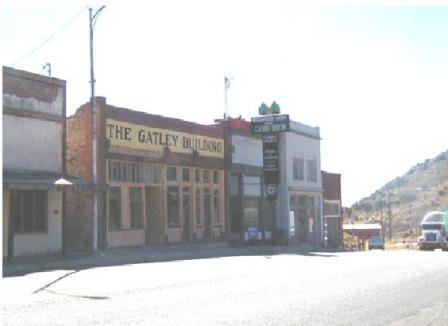 Eureka MillsThe Eureka Mills Superfund site is located about 80 miles from Salt Lake City, Utah. The historic mining site includes Eureka, a city of 800 residents, and some nearby areas. Mining activities started in the area in 1870, after the discovery of silver, lead and minerals. Mining ended in 1958. EPA started cleanup actions in 2000 and 2001, after EPA and the State confirmed high levels of contamination in the area. In 2002, EPA added the site to the Superfund program’s National Priorities List (NPL). Between 2001 and 2010, EPA completed the cleanup of more than 700 properties in Eureka. Other cleanup actions included waste capping, contaminated soil disposal, land use controls and public health actions. The American Recovery and Reinvestment Act (ARRA) provided $26.5 million in funding to the site in 2009. This allowed EPA to complete site cleanup activities a year ahead of schedule. Since the Superfund site boundaries included the entire city, many properties in Eureka were already in residential and commercial use before the Superfund cleanup. The design of EPA’s cleanup plan enabled continued commercial and residential use of the site throughout cleanup activities while also ensuring a safe working and living environment.
Eureka MillsThe Eureka Mills Superfund site is located about 80 miles from Salt Lake City, Utah. The historic mining site includes Eureka, a city of 800 residents, and some nearby areas. Mining activities started in the area in 1870, after the discovery of silver, lead and minerals. Mining ended in 1958. EPA started cleanup actions in 2000 and 2001, after EPA and the State confirmed high levels of contamination in the area. In 2002, EPA added the site to the Superfund program’s National Priorities List (NPL). Between 2001 and 2010, EPA completed the cleanup of more than 700 properties in Eureka. Other cleanup actions included waste capping, contaminated soil disposal, land use controls and public health actions. The American Recovery and Reinvestment Act (ARRA) provided $26.5 million in funding to the site in 2009. This allowed EPA to complete site cleanup activities a year ahead of schedule. Since the Superfund site boundaries included the entire city, many properties in Eureka were already in residential and commercial use before the Superfund cleanup. The design of EPA’s cleanup plan enabled continued commercial and residential use of the site throughout cleanup activities while also ensuring a safe working and living environment.
For more information:
Hill Air Force Base
The Hill Air Force Base (AFB) Superfund site is an active U.S. Air Force base located in northern Utah, about 30 miles north of Salt Lake City. Established in 1940 as Hill Field, Hill AFB covers 6,670 acres across two counties and includes base residential housing. The base also administers environmental activities at the Utah Test and Training Range and Little Mountain Test Annex facilities. The processes personnel used in maintaining equipment and supporting flight-training missions produced a variety of wastes. Hill AFB began investigating releases in 1976, when a nearby resident reported an orange discharge from a spring on his property near the base boundary. EPA placed Hill AFB on the National Priorities List (NPL) in 1987. The U.S. Air Force, the state and EPA are cooperatively investigating and cleaning up this contamination. Since the 1990s, parties have undertaken numerous site investigations and cleanup actions. Site investigations, cleanup and monitoring efforts continue. Numerous reuse and redevelopment activities are currently in progress on the west side of Hill AFB, known as the West-Side Redevelopment area.
For more information:
Intermountain Waste Oil Refinery
The 2-acre Intermountain Waste Oil Refinery Superfund site is located in Bountiful, Utah. Beginning in 1957, operators used the site for waste oil handling, refining, blending and shipping. The Davis County Health Department and the Utah Department of Environmental Quality (UDEQ) cited the business several times because nearby residents complained of odors and health issues. After the company ended operations in 1993, UDEQ began sampling to determine the extent of contamination in soil and groundwater. Human health risks led EPA to add the site to the Superfund program’s National Priorities List (NPL) in 2000. EPA removed chemical containers, storage barrels, scrap equipment, debris and underground tanks. In 2006, Bountiful Irrigation purchased the site to construct an office, large garage and fence on the property. The office uses a vapor mitigation system, which EPA required due to groundwater contamination below parts of the building. EPA continues groundwater monitoring at the site. EPA installed an extraction system with a micro-blower on a well in 2014 to support additional groundwater cleanup. A solar panel powers the micro-blower on the extraction system.
For more information:
International Smelting and Refining
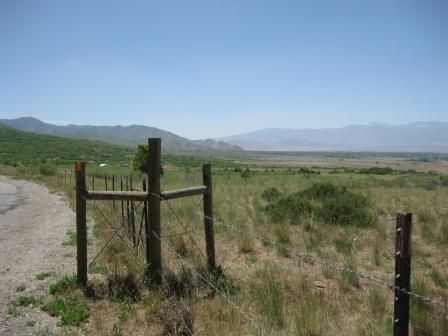 International Smelting and RefiningThe 1,200-acre International Smelting and Refining Superfund site is located 2.5 miles northeast of Tooele, Utah. The general site area is located near the mouth of Pine Canyon, which drains into Pine Creek. Between 1910 and 1972, the Atlantic Richfield Company (now known as ARCO) operated copper smelters that also recovered lead and zinc. As a result of copper, lead and zinc production, ARCO produced about 650,000 tons of smelter waste and dust. Smelter waste, including arsenic, spread over large areas of surface soils through airborne emissions and dust from tailings piles. In response to elevated blood-lead levels of area residents, EPA added the site to the Superfund program’s National Priorities List (NPL) in July 2000. ARCO, under EPA oversight, conducted targeted cleanups at the smelter facility, the Tooele Valley Railroad and the Pine Canyon community. Immediate cleanup actions removed contaminated soils from several residential properties closest to the former smelter area. In addition, cleanup activities at areas along portions of the former Tooele Valley Railroad, the Pine Canyon Conservation Area and city-owned Oquirrh Hills Golf Course included removal of contaminated soil, backfilling with clean soil, capping of areas where contaminated soil was not removed and revegetation using native plants. To support the long term stability of the cleanup, fencing, modification and repair of storm water controls, and implementation of multiple land use controls at the site took place. EPA removed the site from the NPL in 2011. As a result of Superfund cleanup, most of the site remains in use. The Utah Division of Wildlife Resources manages the former smelter area of the site through a conservation easement. The Pine Canyon Conservation Area, which includes the former smelter area, provides the public with recreational opportunities including hiking, horseback riding, wildlife observation and seasonal hunting. A portion of the Tooele Valley Railroad cleanup area included the city-owned Oquirrh Hills Golf Course, which still operates today. The former Toole Valley Railroad provides a biking and walking trail. Cleanup also allows for continued use of residential properties and homes.
International Smelting and RefiningThe 1,200-acre International Smelting and Refining Superfund site is located 2.5 miles northeast of Tooele, Utah. The general site area is located near the mouth of Pine Canyon, which drains into Pine Creek. Between 1910 and 1972, the Atlantic Richfield Company (now known as ARCO) operated copper smelters that also recovered lead and zinc. As a result of copper, lead and zinc production, ARCO produced about 650,000 tons of smelter waste and dust. Smelter waste, including arsenic, spread over large areas of surface soils through airborne emissions and dust from tailings piles. In response to elevated blood-lead levels of area residents, EPA added the site to the Superfund program’s National Priorities List (NPL) in July 2000. ARCO, under EPA oversight, conducted targeted cleanups at the smelter facility, the Tooele Valley Railroad and the Pine Canyon community. Immediate cleanup actions removed contaminated soils from several residential properties closest to the former smelter area. In addition, cleanup activities at areas along portions of the former Tooele Valley Railroad, the Pine Canyon Conservation Area and city-owned Oquirrh Hills Golf Course included removal of contaminated soil, backfilling with clean soil, capping of areas where contaminated soil was not removed and revegetation using native plants. To support the long term stability of the cleanup, fencing, modification and repair of storm water controls, and implementation of multiple land use controls at the site took place. EPA removed the site from the NPL in 2011. As a result of Superfund cleanup, most of the site remains in use. The Utah Division of Wildlife Resources manages the former smelter area of the site through a conservation easement. The Pine Canyon Conservation Area, which includes the former smelter area, provides the public with recreational opportunities including hiking, horseback riding, wildlife observation and seasonal hunting. A portion of the Tooele Valley Railroad cleanup area included the city-owned Oquirrh Hills Golf Course, which still operates today. The former Toole Valley Railroad provides a biking and walking trail. Cleanup also allows for continued use of residential properties and homes.
For more information:
Jacobs Smelter
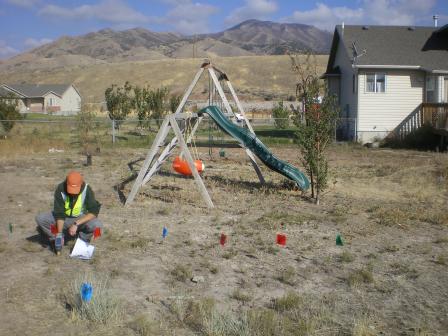 Jacobs SmelterThe Jacobs Smelter Superfund site includes the Town of Stockton, Utah and surrounding areas. The entire site is referred to as Jacobs Smelter Superfund site after the name of one of the large smelting operations in the area. Reports document nine smelters with milling operations that operated at the site during the 1800s. These historic smelter operations caused soil contamination. EPA discovered contamination at the site in 1995. In 1999, EPA began cleanup of the former Jacobs Smelter property and 29 of the most-heavily contaminated residential properties. EPA added the site to the Superfund program’s National Priorities List (NPL) in 2000. In 2001, when the former Jacobs Smelter property and 29 residential properties reached their cleanup goals, EPA took this area off the NPL. The area continues to support residential use. EPA is in the process of completing the proposed plan for the cleanup of another large portion of the site which lies between two residential areas. The remainder of the site will be reevaluated for cleanup after the cleanup of this area has started. As these areas reach cleanup goals, EPA will remove these areas from the NPL. Also in 2001, contractors cleaned up several lots within a new subdivision. In 2010, EPA removed contaminated soil from four more lots within the subdivision, which continues to support residential use. Cleanup of contaminated soil along a railroad took place in 1999. EPA took this area off the NPL in 2005 and railroad operations continue today. Cleanup actions took place at other areas of the site in 2008 and 2012. Residential use continues at the site. Also, small commercial businesses continue to operate at the site and other areas of the site support grazing for horses and cows, which retains jobs and incomes for the local community.
Jacobs SmelterThe Jacobs Smelter Superfund site includes the Town of Stockton, Utah and surrounding areas. The entire site is referred to as Jacobs Smelter Superfund site after the name of one of the large smelting operations in the area. Reports document nine smelters with milling operations that operated at the site during the 1800s. These historic smelter operations caused soil contamination. EPA discovered contamination at the site in 1995. In 1999, EPA began cleanup of the former Jacobs Smelter property and 29 of the most-heavily contaminated residential properties. EPA added the site to the Superfund program’s National Priorities List (NPL) in 2000. In 2001, when the former Jacobs Smelter property and 29 residential properties reached their cleanup goals, EPA took this area off the NPL. The area continues to support residential use. EPA is in the process of completing the proposed plan for the cleanup of another large portion of the site which lies between two residential areas. The remainder of the site will be reevaluated for cleanup after the cleanup of this area has started. As these areas reach cleanup goals, EPA will remove these areas from the NPL. Also in 2001, contractors cleaned up several lots within a new subdivision. In 2010, EPA removed contaminated soil from four more lots within the subdivision, which continues to support residential use. Cleanup of contaminated soil along a railroad took place in 1999. EPA took this area off the NPL in 2005 and railroad operations continue today. Cleanup actions took place at other areas of the site in 2008 and 2012. Residential use continues at the site. Also, small commercial businesses continue to operate at the site and other areas of the site support grazing for horses and cows, which retains jobs and incomes for the local community.
For more information:
Kennecott (North Zone)
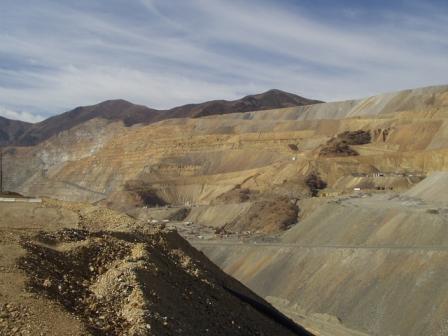 Kennecott (North Zone)The Kennecott (North Zone) site is an industrial area west of Salt Lake City, Utah. Starting in 1906, the Kennecott Utah Copper Company (Kennecott) processed metals, including copper and lead, in the area. Production wastes resulted in contamination of area soil and groundwater. This contamination forced the closure of drinking water wells in the area. EPA proposed the site for the Superfund program’s National Priorities List (NPL) in January 1994. In 1995, EPA agreed that Kennecott would continue the cleanup and EPA would postpone adding the site to the final NPL. Kennecott’s cleanup at the site included removing and disposing of contaminated soils, sediments and sludges on site. Kennecott is currently cleaning up groundwater and has connected residences and businesses to the public water supply lines. Today, Kennecott maintains active mining operations on a portion of the site. Interstate-80, state highways and rail lines pass through the site. A portion of the site is in continued use by the residential community of Magna. In addition, residents continue to enjoy the recreational opportunities offered by the portion of the site bordering the Great Salt Lake. Kennecott purchased land along the south shore of the Great Salt Lake and turned what once had been an abused wetland into a shorebird and waterfowl reserve. Birding groups, schools and university research teams observe and study wildlife in this wetland, which has become a haven for birds and an important education and scientific resource.
Kennecott (North Zone)The Kennecott (North Zone) site is an industrial area west of Salt Lake City, Utah. Starting in 1906, the Kennecott Utah Copper Company (Kennecott) processed metals, including copper and lead, in the area. Production wastes resulted in contamination of area soil and groundwater. This contamination forced the closure of drinking water wells in the area. EPA proposed the site for the Superfund program’s National Priorities List (NPL) in January 1994. In 1995, EPA agreed that Kennecott would continue the cleanup and EPA would postpone adding the site to the final NPL. Kennecott’s cleanup at the site included removing and disposing of contaminated soils, sediments and sludges on site. Kennecott is currently cleaning up groundwater and has connected residences and businesses to the public water supply lines. Today, Kennecott maintains active mining operations on a portion of the site. Interstate-80, state highways and rail lines pass through the site. A portion of the site is in continued use by the residential community of Magna. In addition, residents continue to enjoy the recreational opportunities offered by the portion of the site bordering the Great Salt Lake. Kennecott purchased land along the south shore of the Great Salt Lake and turned what once had been an abused wetland into a shorebird and waterfowl reserve. Birding groups, schools and university research teams observe and study wildlife in this wetland, which has become a haven for birds and an important education and scientific resource.
For more information:
Kennecott (South Zone)
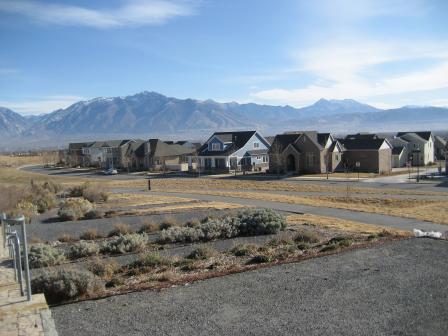 Kennecott (South Zone)The Kennecott (South Zone) site is located southwest of Salt Lake City, Utah. Mining activities at the site began in the 1860s and continue today. Starting in 1906, the Kennecott Utah Copper Company (Kennecott) also used the area to process metals. Wastes produced by these activities contaminated soil, groundwater, surface water and sediment. This contamination led to the closure of drinking water wells in the area. EPA proposed the site for the Superfund program’s National Priorities List (NPL) in 1994. In 1999, Kennecott removed more than 25 million tons of contamination. EPA withdrew the site’s proposal to the NPL in 2008, after signing an agreement with Kennecott outlining future cleanup activities. Cleanup included removing contaminated soils, sediments and sludges. Groundwater treatment is ongoing. The Kennecott Land Company redeveloped 4,126 acres of the site into the Daybreak community. The development is a model of environmentally and socially responsible growth. All 13,600 homes and 9.1 million square feet of commercial building space meet EPA Energy Star efficiency guidelines. The community also features 1,250 acres of parks, a recreational lake, pedestrian-friendly town centers, shops, restaurants, grocery stores, churches, schools and mass transit. Kennecott’s owner, Rio Tinto, opened a corporate office in the Daybreak community. The office has been certified by the U.S. Green Building Council’s Leadership in Energy and Environmental Design program. The Daybreak community continues to develop public transportation corridors, additional homes, commercial businesses, light industry and agricultural land use.
Kennecott (South Zone)The Kennecott (South Zone) site is located southwest of Salt Lake City, Utah. Mining activities at the site began in the 1860s and continue today. Starting in 1906, the Kennecott Utah Copper Company (Kennecott) also used the area to process metals. Wastes produced by these activities contaminated soil, groundwater, surface water and sediment. This contamination led to the closure of drinking water wells in the area. EPA proposed the site for the Superfund program’s National Priorities List (NPL) in 1994. In 1999, Kennecott removed more than 25 million tons of contamination. EPA withdrew the site’s proposal to the NPL in 2008, after signing an agreement with Kennecott outlining future cleanup activities. Cleanup included removing contaminated soils, sediments and sludges. Groundwater treatment is ongoing. The Kennecott Land Company redeveloped 4,126 acres of the site into the Daybreak community. The development is a model of environmentally and socially responsible growth. All 13,600 homes and 9.1 million square feet of commercial building space meet EPA Energy Star efficiency guidelines. The community also features 1,250 acres of parks, a recreational lake, pedestrian-friendly town centers, shops, restaurants, grocery stores, churches, schools and mass transit. Kennecott’s owner, Rio Tinto, opened a corporate office in the Daybreak community. The office has been certified by the U.S. Green Building Council’s Leadership in Energy and Environmental Design program. The Daybreak community continues to develop public transportation corridors, additional homes, commercial businesses, light industry and agricultural land use.
For more information:
Midvale Slag
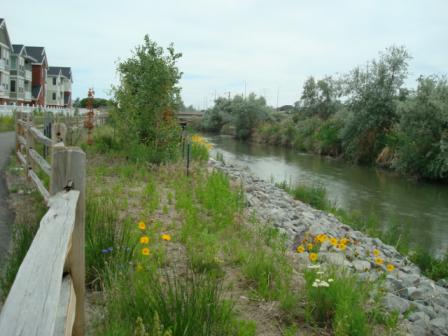 Midvale SlagThe 446-acre Midvale Slag Superfund site is located in Midvale City, Utah. From 1871 to 1958, five smelters processed lead and copper ore at the site. Site operations resulted in toxic levels of heavy metals in groundwater and soils in the area, including on residential properties. As a result, EPA listed the site on the Superfund program’s National Priorities List (NPL) in 1991. EPA worked together with state agencies, the City of Midvale, local citizens and the site’s owner to link the site’s cleanup and redevelopment with a cleanup plan and revitalization goals. The City of Midvale became the first community in EPA Region 8 to be selected as a Superfund Redevelopment pilot project. This led to the groundbreaking creation of the Bingham Junction Reuse Assessment and Master Plan in 2000. Today, the site is home to Bingham Junction, a thriving mixed-use development supporting thousands of jobs. The tax base is about $350 million, which is up from about $4 million in 2004. Builders have completed over 1,000 residential units on the site property and plan to complete about 1,000 more. The site also houses office buildings, a supermarket and other stores. FL Smidth, an international engineering company, operates office and laboratory buildings on site and employs over 400 workers. The office and laboratory buildings achieved the U.S. Green Building Council’s Leadership in Energy and Environmental Design program’s Gold and Silver certifications. Developers plan to create up to 2 million square feet of commercial office and retail space on the site. Sections of Bingham Junction’s Riverwalk Park have opened, providing the community with improved access to the Jordan River. Finally, to increase accessibility to the park and other commercial and residential areas of the site, developers completed the construction of a Utah Transit Authority light rail station and a light rail track in the summer of 2011. The process of the site’s cleanup and reuse highlights successful cooperation between the private sector, the local government, and state and federal agencies. EPA took the site off the NPL in 2015.
Midvale SlagThe 446-acre Midvale Slag Superfund site is located in Midvale City, Utah. From 1871 to 1958, five smelters processed lead and copper ore at the site. Site operations resulted in toxic levels of heavy metals in groundwater and soils in the area, including on residential properties. As a result, EPA listed the site on the Superfund program’s National Priorities List (NPL) in 1991. EPA worked together with state agencies, the City of Midvale, local citizens and the site’s owner to link the site’s cleanup and redevelopment with a cleanup plan and revitalization goals. The City of Midvale became the first community in EPA Region 8 to be selected as a Superfund Redevelopment pilot project. This led to the groundbreaking creation of the Bingham Junction Reuse Assessment and Master Plan in 2000. Today, the site is home to Bingham Junction, a thriving mixed-use development supporting thousands of jobs. The tax base is about $350 million, which is up from about $4 million in 2004. Builders have completed over 1,000 residential units on the site property and plan to complete about 1,000 more. The site also houses office buildings, a supermarket and other stores. FL Smidth, an international engineering company, operates office and laboratory buildings on site and employs over 400 workers. The office and laboratory buildings achieved the U.S. Green Building Council’s Leadership in Energy and Environmental Design program’s Gold and Silver certifications. Developers plan to create up to 2 million square feet of commercial office and retail space on the site. Sections of Bingham Junction’s Riverwalk Park have opened, providing the community with improved access to the Jordan River. Finally, to increase accessibility to the park and other commercial and residential areas of the site, developers completed the construction of a Utah Transit Authority light rail station and a light rail track in the summer of 2011. The process of the site’s cleanup and reuse highlights successful cooperation between the private sector, the local government, and state and federal agencies. EPA took the site off the NPL in 2015.
For more information:
- Midvale Slag Ready for Reuse Determination (2008) (PDF) (103 pp, 10.1 MB, About PDF)
- Cleanup and Mixed-Use Revitalization on the Wasatch Front: The Midvale Slag Superfund Site and Midvale City, Utah (PDF) (18 pp, 1.9 MB)
- Midvale Slag Reuse Case Study (PDF) (18 pp, 1.9 MB)
- Redevelopment of the Midvale Slag Superfund Site (PDF)(1 pg, 64 K)
- Video: From Midvale Slag to Bingham Junction Exit
- Superfund Site Profile Page
Monticello Radioactively Contaminated Properties
The 4-mile Monticello Radioactively Contaminated Properties Superfund site consists of 424 private and commercial properties in and around Monticello, Utah. A vanadium mill operated on the site from 1942 until 1960. The mill produced uranium and vanadium for the U.S. nuclear weapons program. Milling activities and improper use of mine tailings caused uranium contamination. In 1986, EPA added the site to the Superfund program’s National Priorities List (NPL). The U.S. Department of Energy (DOE) led cleanup activities under an agreement with EPA and the State of Utah. The cleanup included properties within 8 miles of the mill site. Property owners beyond that range could choose to have their land tested for cleanup as well. In 2000, DOE completed the cleanup of all affected properties and deleted the site from the NPL. DOE cleaned up properties for unrestricted use, allowing restoration of many properties to their original uses, such as residential, commercial and open space. The site currently includes neighborhoods, a central commercial district, municipal offices, churches, parks and schools.
For more information:
Murray Smelter
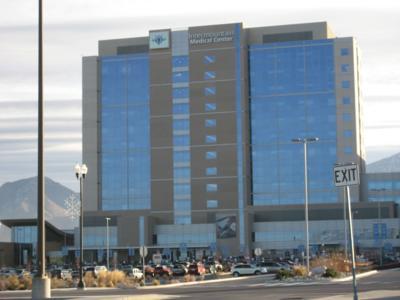 Murray SmelterThe Murray Smelter Superfund site in Murray City, Utah, is a Phoenix Award-winning example of excellence in Superfund redevelopment. This 142-acre former mineral-processing site was once the largest lead smelter in the country. Site testing showed contaminated soil, surface water, groundwater and sediment. EPA Region 8 and Murray City entered into a unique agreement establishing a formal role for the City in planning the site’s cleanup and future use. EPA and Murray City coordinated the site’s cleanup and redevelopment plans simultaneously. Murray City brought together site property owners and the potentially responsible party, ASARCO, to discuss the site’s redevelopment. The parties committed to building cleanup structures and following the Murray City General Land Use Plan. Based on outcomes from these discussions, EPA chose a cleanup plan that incorporated the site’s anticipated future use. Today, site reuse supports over 5,612 jobs and contributes more than $260 million in annual employment income to the local community. The site is home to a Utah Transit Authority light rail station with a 300-space parking lot and a designated connector road; the Inter-mountain Medical Center, a 1.5 million-square-foot, $362.5 million hospital facility; a commercial retail warehouse; a police training center; a school; a cement company; and assorted small businesses. EPA Region 8 and Murray City will continue to work together to promote the safe and beneficial reuse of the site as the expansion of office space and shopping areas remains ongoing.
Murray SmelterThe Murray Smelter Superfund site in Murray City, Utah, is a Phoenix Award-winning example of excellence in Superfund redevelopment. This 142-acre former mineral-processing site was once the largest lead smelter in the country. Site testing showed contaminated soil, surface water, groundwater and sediment. EPA Region 8 and Murray City entered into a unique agreement establishing a formal role for the City in planning the site’s cleanup and future use. EPA and Murray City coordinated the site’s cleanup and redevelopment plans simultaneously. Murray City brought together site property owners and the potentially responsible party, ASARCO, to discuss the site’s redevelopment. The parties committed to building cleanup structures and following the Murray City General Land Use Plan. Based on outcomes from these discussions, EPA chose a cleanup plan that incorporated the site’s anticipated future use. Today, site reuse supports over 5,612 jobs and contributes more than $260 million in annual employment income to the local community. The site is home to a Utah Transit Authority light rail station with a 300-space parking lot and a designated connector road; the Inter-mountain Medical Center, a 1.5 million-square-foot, $362.5 million hospital facility; a commercial retail warehouse; a police training center; a school; a cement company; and assorted small businesses. EPA Region 8 and Murray City will continue to work together to promote the safe and beneficial reuse of the site as the expansion of office space and shopping areas remains ongoing.
For more information:
- Reuse and the Benefit to Community: Murray Smelter Case Study (2012) (PDF) (10 pp, 1.0 MB, About PDF)
- Redevelopment of the Murray Smelter Superfund Site (PDF)(1 pg, 106 K)
- Superfund Site Profile Page
Ogden Railroad Yard
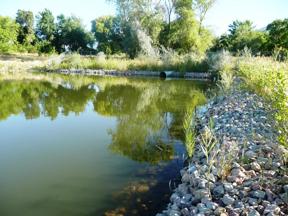 Ogden Railroad YardThe Ogden Railroad Yard site is located on the west side of the City of Ogden, Utah, about 40 miles north of Salt Lake City. The site includes 1,120 acres bounded by the Weber River, the Ogden River and Goode Lake. For almost 150 years, the site has been the location of railway operations. Spills and improper handling of hazardous substances resulted in contaminated groundwater, sediment, soil and sludge. Consequently, EPA began cleanup in 1994. Cleanup included soil removal and capping and implementation of land use restrictions. EPA oversees ongoing groundwater monitoring, as well as maintenance of the Goode Lake coffer dam, fencing and land use restrictions. Concurrent with cleanup activities, the Utah Transit Authority (UTA) built the FrontRunner commuter rail line, which extends across the site, providing service from Pleasant View to Salt Lake City. UTA also constructed a flyover bridge and a passenger station at the site. EPA worked with the community to integrate local reuse priorities into the cleanup plans. Goode Lake, which closed during part of the cleanup, now provides the local community with a fishing area and a water skiing park. Originally constructed on the site in 1924, Union Station now houses museums, an art gallery, shops, restaurants and a visitor center. The site earned a prestigious Phoenix Award for achievement of excellence in Superfund site reuse.
Ogden Railroad YardThe Ogden Railroad Yard site is located on the west side of the City of Ogden, Utah, about 40 miles north of Salt Lake City. The site includes 1,120 acres bounded by the Weber River, the Ogden River and Goode Lake. For almost 150 years, the site has been the location of railway operations. Spills and improper handling of hazardous substances resulted in contaminated groundwater, sediment, soil and sludge. Consequently, EPA began cleanup in 1994. Cleanup included soil removal and capping and implementation of land use restrictions. EPA oversees ongoing groundwater monitoring, as well as maintenance of the Goode Lake coffer dam, fencing and land use restrictions. Concurrent with cleanup activities, the Utah Transit Authority (UTA) built the FrontRunner commuter rail line, which extends across the site, providing service from Pleasant View to Salt Lake City. UTA also constructed a flyover bridge and a passenger station at the site. EPA worked with the community to integrate local reuse priorities into the cleanup plans. Goode Lake, which closed during part of the cleanup, now provides the local community with a fishing area and a water skiing park. Originally constructed on the site in 1924, Union Station now houses museums, an art gallery, shops, restaurants and a visitor center. The site earned a prestigious Phoenix Award for achievement of excellence in Superfund site reuse.
For more information:
Pallas Yard
 Pallas YardThe Pallas Yard site is located in Murray City, Utah. The site is an active railroad yard that includes five sets of tracks. Union Pacific and the Denver & Rio Grande railroads laid the original Pallas Yard rail lines around the turn of the century to support a growing smelter industry. During rail yard development, construction workers used materials containing arsenic and lead. The arsenic contaminated groundwater. The Utah Transit Authority (UTA) purchased the site in 1995 as part of the TRAX Light Rail Transportation Project in preparation for the 2002 Winter Olympics. UTA, in partnership with EPA and the State, cleaned up the site. Cleanup activities included removing soil and placing it into 8-foot high sound-muffling berms along the railroad tracks. Since cleanup, UTA uses the site as a thoroughfare for TRAX. Groundwater monitoring at the site continues.
Pallas YardThe Pallas Yard site is located in Murray City, Utah. The site is an active railroad yard that includes five sets of tracks. Union Pacific and the Denver & Rio Grande railroads laid the original Pallas Yard rail lines around the turn of the century to support a growing smelter industry. During rail yard development, construction workers used materials containing arsenic and lead. The arsenic contaminated groundwater. The Utah Transit Authority (UTA) purchased the site in 1995 as part of the TRAX Light Rail Transportation Project in preparation for the 2002 Winter Olympics. UTA, in partnership with EPA and the State, cleaned up the site. Cleanup activities included removing soil and placing it into 8-foot high sound-muffling berms along the railroad tracks. Since cleanup, UTA uses the site as a thoroughfare for TRAX. Groundwater monitoring at the site continues.
For more information:
Richardson Flat Tailings
Richardson Flat Tailings is a 258-acre proposed Superfund site near Park City, Utah. The site is adjacent to Silver Creek and the surrounding watershed. Prior to the 1950s, companies mined and left behind tailings wastes containing heavy metals and other contaminants. Between 1953 and 1982, United Park City Mines (UPCM) leased the site and their mines to various mining companies. These companies operated the mines, used the site for tailings disposal and left 450,000 tons of tailings on site. EPA and state environmental officials found contamination entering Silver Creek and surrounding areas. EPA proposed the site for the Superfund program’s National Priorities List (NPL) in 1992. UPCM cleanup activities included covering mine tailings, growing new grass, improving drainage ditches and restoring habitat. EPA continues working with UPCM to clean up the site and restore Silver Creek. Creek restoration work will improve aquatic habitats, including wetlands and stream channels, and restore water quality. Cleanup actions include replanting these areas with native plant species. Part of the site now includes land managed by the Bureau of Land Management and a former Union Pacific railroad right-of-way that the Utah Division of Parks and Recreation currently manages as a recreational area.
For more information:
Rose Park Sludge Pit
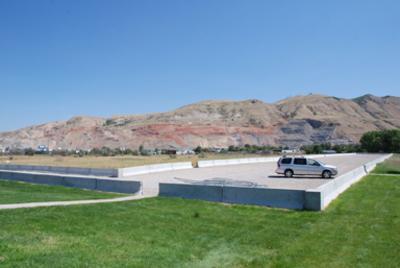 Rose Park Sludge PitThe Rose Park Sludge Pit Superfund site occupies 5 acres within Rosewood Park in Salt Lake City, Utah. Utah Oil and Refining Company disposed of contaminated waste in a pit on site from the 1930s until 1957. Salt Lake City purchased the property in 1957 and rediscovered the waste pit in 1976. EPA placed the site on the Superfund program’s National Priorities List (NPL) in 1983. Site cleanup involved the construction of a perimeter wall and capping waste material. After completing cleanup, EPA deleted the site from the NPL in 2003. The City of Salt Lake saw the former Superfund site as an area to expand and improve the amenities of Rosewood Park, a popular park used for recreation by community residents. EPA closely collaborated with the State, the City of Salt Lake and the responsible party to expand the park. The expansion included additional parking areas and plans for construction of a dog park. In addition, the City built a new playground, exercise equipment and sidewalks, and installed new landscaping. The City also converted a property adjacent to the west side of the site into a skate park. The expansion of the park onto the site has provided several added amenities to the community while improving cleanup protectiveness by prohibiting motor vehicle access to the cap. The City is looking to partner with a community group or business to fund and maintain a dog park at the site.
Rose Park Sludge PitThe Rose Park Sludge Pit Superfund site occupies 5 acres within Rosewood Park in Salt Lake City, Utah. Utah Oil and Refining Company disposed of contaminated waste in a pit on site from the 1930s until 1957. Salt Lake City purchased the property in 1957 and rediscovered the waste pit in 1976. EPA placed the site on the Superfund program’s National Priorities List (NPL) in 1983. Site cleanup involved the construction of a perimeter wall and capping waste material. After completing cleanup, EPA deleted the site from the NPL in 2003. The City of Salt Lake saw the former Superfund site as an area to expand and improve the amenities of Rosewood Park, a popular park used for recreation by community residents. EPA closely collaborated with the State, the City of Salt Lake and the responsible party to expand the park. The expansion included additional parking areas and plans for construction of a dog park. In addition, the City built a new playground, exercise equipment and sidewalks, and installed new landscaping. The City also converted a property adjacent to the west side of the site into a skate park. The expansion of the park onto the site has provided several added amenities to the community while improving cleanup protectiveness by prohibiting motor vehicle access to the cap. The City is looking to partner with a community group or business to fund and maintain a dog park at the site.
For more information:
Sharon Steel Corp. (Midvale Tailings)
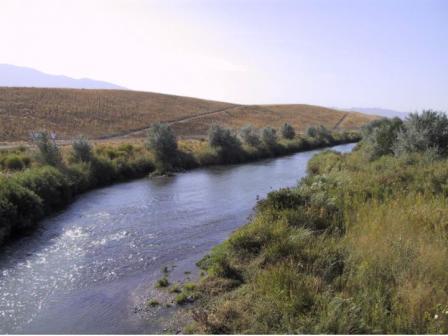 Sharon Steel Corp. (Midvale Tailings)The 470-acre Sharon Steel Corp. (Midvale Tailings) Superfund site is located in Midvale, Utah. The site originally housed a former smelting and ore-milling facility that produced lead, copper, zinc and other metals from 1906 to 1971. Site investigations found contaminated groundwater and soil. EPA added the site to the Superfund program’s National Priorities List (NPL) in 1990. EPA and the State of Utah’s cleanup activities included installing fencing, stabilizing river banks, controlling dust, removing buildings, capping waste, monitoring groundwater, and removing contaminated soil and replacing with clean fill. Site cleanup was completed in 1999. EPA deleted the site from the NPL in 2004. Today, an extension of Bingham Junction Boulevard crosses a vacant portion of the site, providing access to nearby roads. The Jordan River Parkway Trail also runs along the western edge of the site, supporting a variety of non-motorized recreational uses. A wide range of redevelopment can occur on site incorporating mixed uses like residential, office and commercial, business park and industrial, and open space. The reuse plan must be specific to the development proposal under consideration at the time, and must be approved by the City of Midvale.
Sharon Steel Corp. (Midvale Tailings)The 470-acre Sharon Steel Corp. (Midvale Tailings) Superfund site is located in Midvale, Utah. The site originally housed a former smelting and ore-milling facility that produced lead, copper, zinc and other metals from 1906 to 1971. Site investigations found contaminated groundwater and soil. EPA added the site to the Superfund program’s National Priorities List (NPL) in 1990. EPA and the State of Utah’s cleanup activities included installing fencing, stabilizing river banks, controlling dust, removing buildings, capping waste, monitoring groundwater, and removing contaminated soil and replacing with clean fill. Site cleanup was completed in 1999. EPA deleted the site from the NPL in 2004. Today, an extension of Bingham Junction Boulevard crosses a vacant portion of the site, providing access to nearby roads. The Jordan River Parkway Trail also runs along the western edge of the site, supporting a variety of non-motorized recreational uses. A wide range of redevelopment can occur on site incorporating mixed uses like residential, office and commercial, business park and industrial, and open space. The reuse plan must be specific to the development proposal under consideration at the time, and must be approved by the City of Midvale.
For more information:
US Magnesium
The 4,525-acre U.S. Magnesium Superfund site is located adjacent to the Great Salt Lake in Tooele County, Utah. In 1972, U.S. Magnesium began magnesium production at the site. The process produced acidic waste water that eventually spread into the soil and evaporated into the air. In addition to threatening the health of U.S. Magnesium workers, the contamination posed a threat to birds and wildlife that live around Great Salt Lake. EPA added the site to the Superfund program’s National Priorities List (NPL) in 2009. EPA began meeting with interested stakeholders to form a Community Advisory Group to offer resources for the larger Tooele County community. While state and federal agencies determine the best cleanup plan for the site, U.S. Magnesium still actively operates on the property. U.S. Magnesium is the only remaining magnesium producer in the U.S, employing 530 people and about 125 contractors.
For more information:
Utah Power & Light/American Barrel Co.
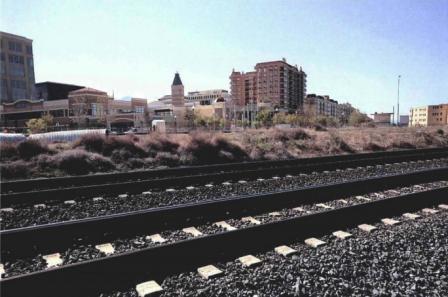 Utah Power & Light/American Barrel Co.The 2-acre Utah Power & Light/American Barrel Co. Superfund site is located in Salt Lake City, Utah. Site operators conducted barrel storage, wood-treating and coal gasification operations on site from 1870 until 1987. These operations produced byproducts such as tar, sludge, ash and liquid wastes. Combined with chemicals from leaking barrels, the byproducts contaminated soil and groundwater. EPA added the site to the Superfund program’s National Priorities List (NPL) in 1989. Utah Power & Light, the responsible party, removed 50,000 barrels, removed and disposed of contaminated soil off site, and built a soil vapor and groundwater extraction system. The company completed cleanup in 1996. The soil vapor and groundwater extraction system continues to operate and groundwater monitoring is ongoing. Groundwater and land use restrictions are in place at the site. A number of redevelopment activities have taken place at the site and nearby the site following site cleanup. In 2007, Union Pacific Railroad (UPRR) realigned its tracks that ran across the site to increase the efficiency of its rail service throughout the area and reduce rail safety concerns. The realignment facilitated the construction of the Utah Transit Authority (UTA) FrontRunner commuter rail line, which runs across the site, in 2007 and 2008. Further, UTA constructed a transfer station for the FrontRunner commuter rail line on site in 2009. In 2014, Giv Group, a redevelopment company, built a 5-story apartment complex on the west side of the site.
Utah Power & Light/American Barrel Co.The 2-acre Utah Power & Light/American Barrel Co. Superfund site is located in Salt Lake City, Utah. Site operators conducted barrel storage, wood-treating and coal gasification operations on site from 1870 until 1987. These operations produced byproducts such as tar, sludge, ash and liquid wastes. Combined with chemicals from leaking barrels, the byproducts contaminated soil and groundwater. EPA added the site to the Superfund program’s National Priorities List (NPL) in 1989. Utah Power & Light, the responsible party, removed 50,000 barrels, removed and disposed of contaminated soil off site, and built a soil vapor and groundwater extraction system. The company completed cleanup in 1996. The soil vapor and groundwater extraction system continues to operate and groundwater monitoring is ongoing. Groundwater and land use restrictions are in place at the site. A number of redevelopment activities have taken place at the site and nearby the site following site cleanup. In 2007, Union Pacific Railroad (UPRR) realigned its tracks that ran across the site to increase the efficiency of its rail service throughout the area and reduce rail safety concerns. The realignment facilitated the construction of the Utah Transit Authority (UTA) FrontRunner commuter rail line, which runs across the site, in 2007 and 2008. Further, UTA constructed a transfer station for the FrontRunner commuter rail line on site in 2009. In 2014, Giv Group, a redevelopment company, built a 5-story apartment complex on the west side of the site.
For more information:
Wasatch Chemical Cp. (Lot 6)
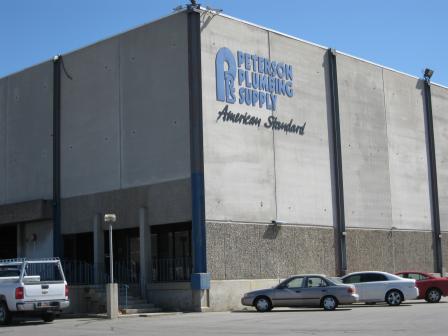 Wasatch Chemical Co. (Lot 6)The 18-acre Wasatch Chemical Co. (Lot 6) Superfund site is located in Salt Lake City, Utah. From 1957 through the early 1970s, Wasatch Chemical Company produced industrial chemical products, including herbicides, pesticides and fertilizer on site. The company’s waste disposal practices and spills caused contamination in soil and groundwater. The site area sits within the center of the Jordan River Valley and is located over an aquifer that serves as a regional source of potable water. In June 1986, EPA removed drums and containers from the site. EPA added the site to the Superfund program’s National Priorities List (NPL) in 1991. In the years following, the responsible party treated soil and groundwater, completing cleanup in 1997. Questar and Steelco, owners of Wasatch Chemical Company, remain active industries at the site. An industrial steel warehouse, the Peterson Plumbing supply company and several office buildings continue to operate on the property. Site monitoring is ongoing.
Wasatch Chemical Co. (Lot 6)The 18-acre Wasatch Chemical Co. (Lot 6) Superfund site is located in Salt Lake City, Utah. From 1957 through the early 1970s, Wasatch Chemical Company produced industrial chemical products, including herbicides, pesticides and fertilizer on site. The company’s waste disposal practices and spills caused contamination in soil and groundwater. The site area sits within the center of the Jordan River Valley and is located over an aquifer that serves as a regional source of potable water. In June 1986, EPA removed drums and containers from the site. EPA added the site to the Superfund program’s National Priorities List (NPL) in 1991. In the years following, the responsible party treated soil and groundwater, completing cleanup in 1997. Questar and Steelco, owners of Wasatch Chemical Company, remain active industries at the site. An industrial steel warehouse, the Peterson Plumbing supply company and several office buildings continue to operate on the property. Site monitoring is ongoing.
For more information:
